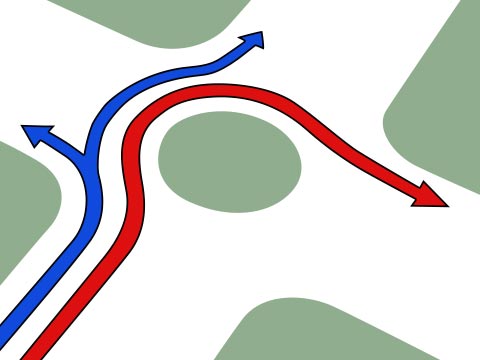Benefits of suspension on a mobility scooter
Mobility scooters are great machines that offer those who have difficulty walking long distances the freedom to continue living the life they want. At its core, a mobility scooter is just a device to make life easier, but even mobility scooters need to be practical and comfortable to use. One feature that can enhance your experience is suspension.
What is suspension?
Suspension is the system that gives vehicles the right balance between road handling and ride quality. It is a system of springs and shock absorbers that are present on many vehicles with wheels, rather like the one in your car. In simple terms, the goal of suspension is for the springs to absorb the impact of the unevenness of the surface you’re driving on, offering a smoother ride so that you are more comfortable.
You might be wondering why a mobility scooter might need this, but if you consider your local area and the places you might be using your scooter, it’s likely that you won’t just be manoeuvring over smooth pathways and will have to navigate some lumps and bumps along the way. Suspension makes a scooter more comfortable.
Why is suspension so important on mobility scooters?
Suspension is an important component of the scooter and it facilitates three design goals; safety, comfort, and limiting wear and tear.
It is worth noting that not all mobility scooters have suspension, and of the ones that do, some perform better than others.
Safety is one of the major factors considered when designing a vehicle with multiple parts. Consider that the main target audience for mobility scooters are the elderly or less abled individuals. With this in mind, many people who fit this category can suffer from joint pain or fragility, and because of this, you don’t want to be thrown around on every bump or dip in the road. Suspension helps to lessen the effect of the inconsistencies in the surface of roads and pavements, offering a smoother ride.
By providing a smoother ride for the user, the suspension also aids in the control of the scooter. When the user is being shaken around due to the rough surface they’re driving on, they are more likely to move the steering control from side to side, potentially resulting in unwanted movements. When the ride is smoother, the user has a better grip on the controls and can avoid such movements and therefore keep more control over the vehicle.
Comfort is another important role that suspension plays in the operation of the scooter. The suspension helps the scooter maintain a relatively fixed position as the vehicle moves in different directions along the path. In partnership with the wheels, the suspension provides balance to avoid shaking the user around. The smoother the ride, the more confident the user will feel on their scooter.
Wear and tear will always occur through any form of use, simply from navigating roads and pathways as well as the parts moving against each other to propel the vehicle forward. Good suspension means that there are fewer demands on the other parts of the scooter, as it is designed to distribute the pressure, absorb the stress, and is more durable than the other features of the scooter in this area. In the unlikely event that you have to replace the suspension, it will still have protected other parts, lengthening the overall lifespan of the scooter in the long run.
Types of suspension
There are three main types of suspension available on mobility scooters; spring, hydraulic, and rubber.
- Spring – Spring suspension allows for greater comfort when riding due to the up and down movements of the spring along a bumpy road, meaning you’ll feel fewer shocks. The spring absorbs the impact of the terrain on the tyres, keeping the ride fairly balanced.
- Rubber – As the name suggests, this type of suspension is made of rubber. Rubber is quite effective and it naturally provides support, flexibility, and softness which is essential for absorbing the impact of shocks.
Suspension maintenance
Mobility scooter suspensions don’t require that much maintenance. For spring and rubber suspensions you need to ensure that all the screws are tightened enough so that they don’t come loose while driving.

What battery can I use for my lightweight mobility scooter? Which battery is best?

Taking your lightweight mobility scooter on an aeroplane. Thinking of flying?

Do we need a Highway Code for mobility scooter users? Mobility Highway Code

What does a home demonstration involve? Home Demonstrations
Read more mobility articles



